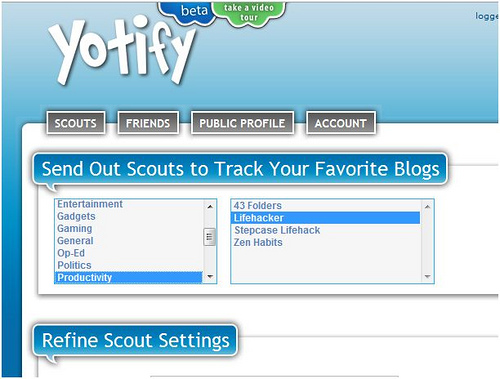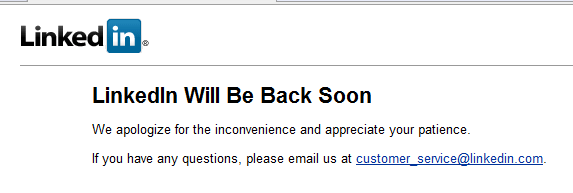 Fincancial crisis or not, VC investments did not entirely disappear, it’s just getting increasingly difficult to get funded. But VCs are still on the lookout, and as proof I’ll be moderating another SVASE VC Breakfast Club meeting this Thursday, October 2nd in San Francisco.
Fincancial crisis or not, VC investments did not entirely disappear, it’s just getting increasingly difficult to get funded. But VCs are still on the lookout, and as proof I’ll be moderating another SVASE VC Breakfast Club meeting this Thursday, October 2nd in San Francisco.
As usual, it’s an informal round-table where up to 10 entrepreneurs get to deliver a pitch, then answer questions and get critiqued by a VC Partner. We’ve had VC’s from Draper Fisher, Kleiner Perkins, Mayfield, Mohr Davidow, Emergence Capital …etc. This time we’ll welcome Peter Morrissey, Managing Director, Hambrecht Geneva Ventures.
These breakfast meetings are a valuable opportunity for Entrepreneurs, most of whom would probably have a hard time getting through the door to VC Partners. Since I’ve been through quite a few of these sessions, both as Entrepreneur and Moderator, let me share a few thoughts:
- It’s a pressure-free environment, with no PowerPoint presentations, live demos, Business Plans…etc, just casual conversation; but it does not mean you should come unprepared!
- Follow a structure, don’t just roam about what you would like to do, or even worse, spend all your time describing the problem, without addressing what your solution is.
- Don’t forget “small things” like the Team, Product, Market..etc.
- It would not hurt to mention how much you are looking for, and how you would use the funds…
- Write down and practice your pitch, and prepare to deliver a compelling story in 2-3 minutes. You will have about 8-10 minutes, the first half of which is your pitch, but believe me, whatever your practice time was, when you are on the spot, you will likely take twice as long to deliver your story. The second half of your time-slot is Q&A with the VC.
- Bring an Executive Summary; some VC’s like it, others don’t.
- Last, but not least, please be on time! I am not kidding… some of you know why I even have to bring this up. Arriving an hour late to a one-and-a-half-hour meeting is NOT acceptable, but we’ve had too many such incidents, so here’s a new rule: if you’re late by more than 20 minutes, you will not be allowed to join the session.
Here’s the event info page, and please remember to register the next three Entrepreneurs get in free, contact me here.
See you in San Francisco!


![Reblog this post [with Zemanta]](https://www.zoliblog.com/wp-content/uploads/HLIC/54e6a3db43b098ecbf5db09e027cb1c1.png)
 . How about picking a name that almost actively drives visitors away?
. How about picking a name that almost actively drives visitors away? FairSoftware is the place to start and grow a virtual online business. It only takes a few clicks for software developers and website publishers to incorporate, hire and share revenue with other project members.
FairSoftware is the place to start and grow a virtual online business. It only takes a few clicks for software developers and website publishers to incorporate, hire and share revenue with other project members.
![Reblog this post [with Zemanta]](https://www.zoliblog.com/wp-content/uploads/HLIC/c3f6a73b6f73860cb3967d8190b33e5c.png)
 After all, those greedy Partners who stole this deal from their Limited Partners made a coupla millions each.
After all, those greedy Partners who stole this deal from their Limited Partners made a coupla millions each.

 )
) Then there’s the issue of The Gadget. I believe the iPod at the first conference was just more-then-generous swag. The iPhones handed out at the second conference had an integral part at the event: several applications released specifically for Office 2.0 allowed participants to interact with each other, navigate the schedule and find sessions. This time all paid participants will receive a the HP 2133 Mini-Note PC.
Then there’s the issue of The Gadget. I believe the iPod at the first conference was just more-then-generous swag. The iPhones handed out at the second conference had an integral part at the event: several applications released specifically for Office 2.0 allowed participants to interact with each other, navigate the schedule and find sessions. This time all paid participants will receive a the HP 2133 Mini-Note PC.
 I’ve repeatedly praised Web-based Invoicing service
I’ve repeatedly praised Web-based Invoicing service  Quick update to my recent
Quick update to my recent  Dropbox has one advantage over Syncplicity: it’s multi-platform, including Apple’s OS X and Linux, whereas Syncplicity is Windows only for now. But that’s where it ends: it has less features (forget Web Apps integration, e.g. Google, Zoho, Scribd, Picnik), and has what I consider a huge flaw: you have to drop your files into a dedicated folder to be synchronized. That may be reasonable if you want to collaborate on a limited set of files, but it simply does not resolve the “access to all my data anywhere, anytime” problem. It’s certainly a show-stopper for me.
Dropbox has one advantage over Syncplicity: it’s multi-platform, including Apple’s OS X and Linux, whereas Syncplicity is Windows only for now. But that’s where it ends: it has less features (forget Web Apps integration, e.g. Google, Zoho, Scribd, Picnik), and has what I consider a huge flaw: you have to drop your files into a dedicated folder to be synchronized. That may be reasonable if you want to collaborate on a limited set of files, but it simply does not resolve the “access to all my data anywhere, anytime” problem. It’s certainly a show-stopper for me. Synchronization
Synchronization Backup
Backup . On a more serious note, what I really would like to see is full Syncplicity<>Zoho integration, like it works with Google today (and since Zoho supports more Word functions, the conversion should be less lossy). And while on the wish-list, how about sync-ing to Flickr?
. On a more serious note, what I really would like to see is full Syncplicity<>Zoho integration, like it works with Google today (and since Zoho supports more Word functions, the conversion should be less lossy). And while on the wish-list, how about sync-ing to Flickr?



 Yes, I like LinkedIN, and am one of the very early users, from the early days before social networks become trendy. Simply because,
Yes, I like LinkedIN, and am one of the very early users, from the early days before social networks become trendy. Simply because, 
Recent Comments